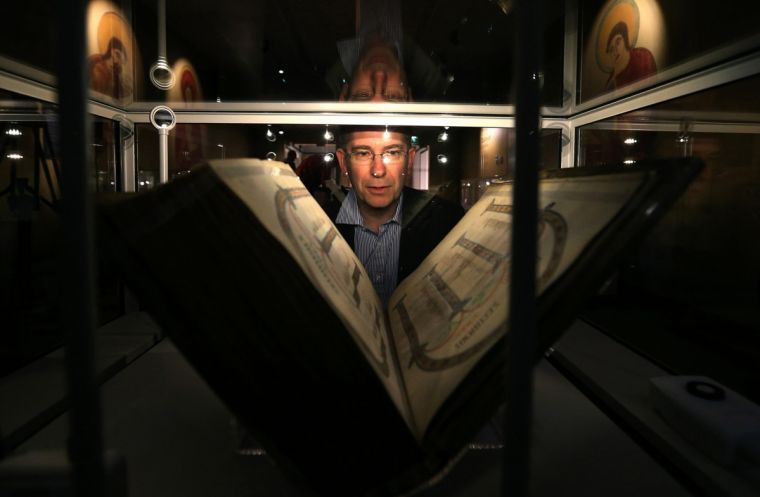Lindisfarne Gospels goes on display in Durham

The Lindisfarne Gospels has gone on display in a rare exhibition at the Palace Green Library in Durham.
The gospels form one of the most precious books in the world, dating back to the 8th century and containing exquisite examples of medieval art.
The manuscript is on display until 30 September alongside the St Cuthbert Gospel and St Cuthbert's treasures, including a sapphire ring, a portable altar, his jewelled cross and fragments of his vestments.
A programme of events is taking place across the North East to coincide with the display in celebration of the region's creative, artistic and spiritual heritage.
At Lindisfarne Priory, on Holy Island, the original home of the Lindisfarne Gospels and home of St Cuthbert, an art installation has been created using 30,000 glass jars filled with coloured water.
The 100 sq metre visual spectacle, entitled 'Carpet', is the work of environmental artist Steve Messam and is inspired by the vibrancy and fusion of colour from the time of the Lindisfarne Gospels.
The installation is on display until 7 July in the grounds of the priory as part of the Festival of the North East.
"I love to work in historic spaces to create extraordinary pieces and creating a new interpretation of the Lindisfarne Gospels in what is essentially its birthplace is very exciting and a real honour," said Messam.
"The elaborately patterned pages in the Lindisfarne Gospels which preceded each of the four gospels are known as 'Carpet Pages'.
"Their geometric designs are a blend of Celtic, Pictish, Germanic and middle-Eastern styles. This blend reflects the cosmopolitan society within the Priory at the time.
"Today's 'Carpet' artwork is made from the same palette of seven colours used in the gospels: red, yellow, blue, green, purple, black and white. My design is made using the same geometric techniques used in the manuscripts using dividers and compasses."











